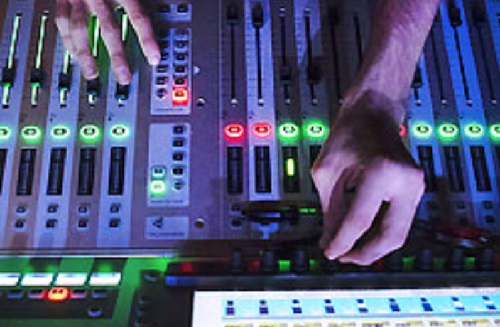I hate to admit this, but the thing I dislike most about audio production is mixing monitors.
There, I’ve said it.
Sorry to all the musicians out there. In truth, musicians need to learn what they need to hear as that’s where their frustration lies.
It starts with a lack of focus. When the musician can’t hear something, they ask for more of it. Then the monitor mix gets louder. We’ve gone through changes that have taken the pain out of mixing monitors and created mixes the musicians liked.
As practice progressed from our Tuesday night rehearsal through to the Sunday morning run-through, the monitor mixes always got louder. To be fair, I’m not blaming the musician here, or the sound person, it’s just what has happened.
But what happens when seven monitors are on stage, feeding back into mics, and also bleeding into the seats because of their immense volume? It affects the mix, and what happens when the mix gets affected? It’s a downward spiral from there.
My worship pastor and I had a discussion about this and subsequently talked with the band. We needed to reign things back in and to do it, we had to educate musicians and vocalists on what is actually needed in the monitor mixes.
The band was informed monitors aren’t meant to provide a nice, clean full band mix. If that was the case, they’d get the main mix and everything would be good. But no, the monitor is there for them to hear what they need to hear, in order to play as part of the band. So what does this mean for everyone?
First, it means swallowing a little bit of pride, and second, it means thinking critically for what is really needed.
The musicians were asked to consider what’s in their monitor mix and what really needs to be there. For instance, not all four singers need to be in everyone’s monitor. Just the person leading the song needs to be in any of the musician’s monitors. Everyone wants to hear the beautiful harmonies of the backing vocalists, but other than the vocalists themselves, it isn’t needed.
The bass player needs to hear the kick drum and the whole acoustic drum kit as well, but on most stages with live floor monitors, the drums will come through without any additional monitor needs.
The major difference between live monitors and in-ear monitors (IEMs) and drum mixing is that with IEMs, more of the drums need to be in monitors for the sake of keeping time. Every mic on the drum kit does not need to be there though. I put the kick and overheads in the IEMs, sometimes the snare; it depends how well it is coming through the overhead channels. But the tom mics don’t need to be there as the overheads will pick those up.
The keyboards are important for the vocalists, often for finding the note and staying in key for a song. The acoustic guitar can also help with this and keep track of the feel of the song.
What about the electric guitar and the bass guitar? Again, this depends on the song, but they aren’t really needed much in most monitors other than the electric guitarist and the bassist. And if you have live amps on stage (which we do) then you might not need them at all.
Basically, everyone doesn’t need to be heard in everyone’s monitor mix, whether live wedges or IEMs. We don’t want to deafen our musicians, and we want to keep the sound as clean as possible for the congregation on Sunday morning.
The next step was training sound operators and musicians what to do when something can’t be heard.The problem isn’t necessarily solved by turning something up louder, it might be that something else needs to come down. If the guitar players say they can’t hear the lead vocalist, maybe instead of boosting the lead vocalist, try turning down the other instruments in their monitors. If that doesn’t work, consider boosting the vocal.
Using the above processes, we significantly lowered our stage volume while it was still loud enough that all of the musicians and vocalists could hear themselves just fine. All it took was some communication and a little education.
During the next practice, musicians said with the monitors being quieter that they really noticed the room more. The vocalists felt more comfortable as the sound wasn’t blasting their ears, but was loud enough to hear themselves, and it showed in their comfort level onstage.
Comfortable musicians play and sing better than if they’re worrying about their monitor mix. And those comfortable musicians along with a quieter stage means a clearer mix for the congregation.
Derek Sexsmith is the director of technical services at Heritage Park Alliance Church in Windsor, Ontario, Canada. His blog, dereksoundguy.com, chronicles his experience working on the technical aspects of a church. Also follow him on twitter @dereksoundguy.





















